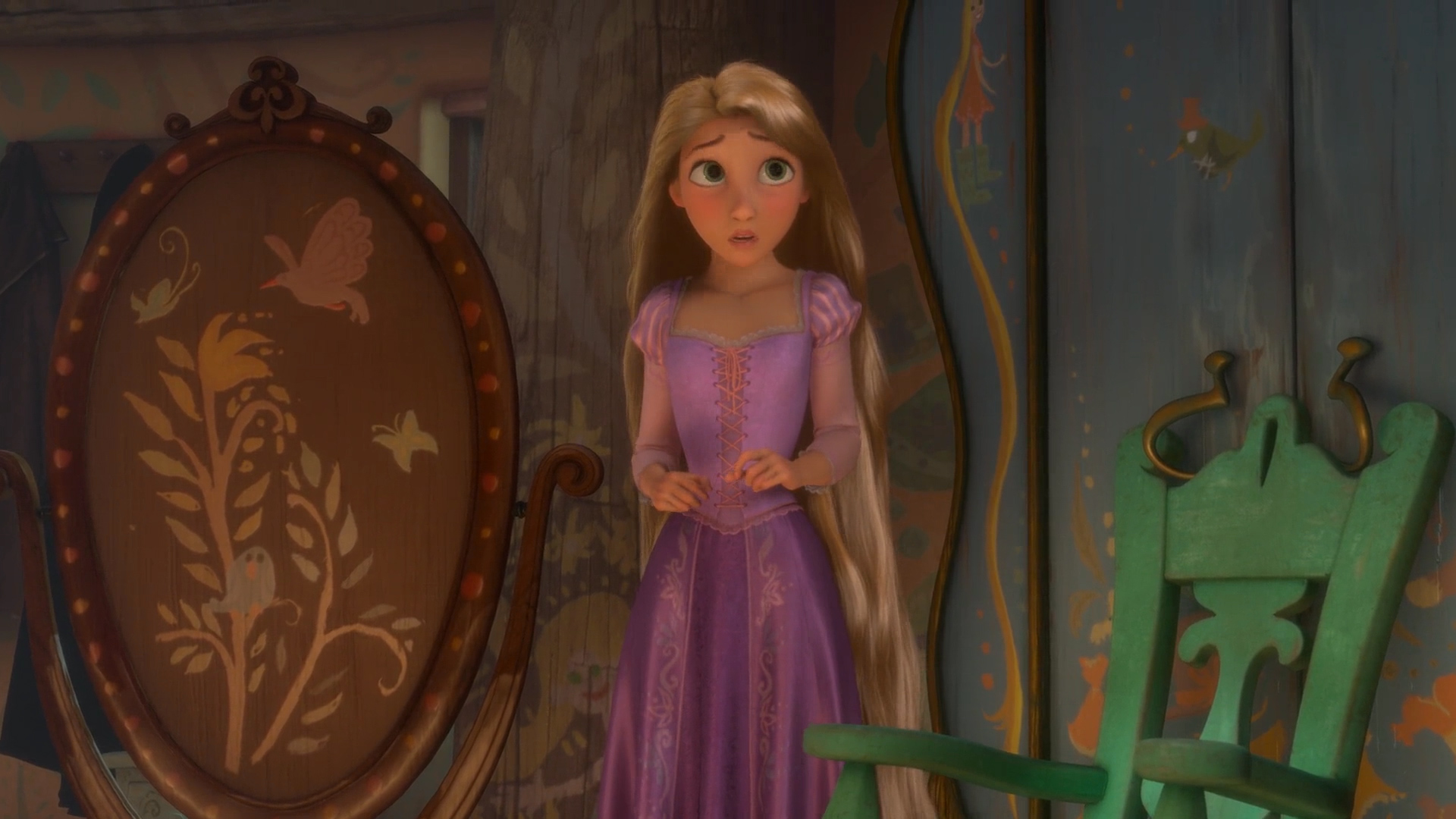
10 Mar Light and mirror: analyzing “Tangled”
I have been interested in mirrors for years. The mirror is an object that has always been a source of discomfort and fascination for me. However, in the Disney film Tangled, it becomes a very interesting case of study. I regard it as proof of how cinema is full of details which may be ignored, but that deserve closer observation. As we see how an object is developed in a film we realize they can act as metaphors, placed carefully and full of intention.
Maybe my analytical mind is playing with me in this study, but I consider my thoughts worth sharing. In this article I will analyze the mirror present in Tangled, and its role in the plot of the film.
For this analysis, we will follow the plot of the movie, jumping to those scenes where the mirror is present, or to those where reflections are important. The goal is to prove how mirrors and light are the metaphor for the relationship between the witch and Rapunzel and it’s aspects of control.
Curiously, it is an object which may be disregarded in a first viewing of the movie, even though interaction with it is clear and prolonged. It is not a main character or object and neither is it a mystical tool (like the magic sword of King Arthur or the rose in Beauty and the Beast), but it seems to be visibly intended to perform as it does.
PART I: THE MIRROR AND THE TRUTH
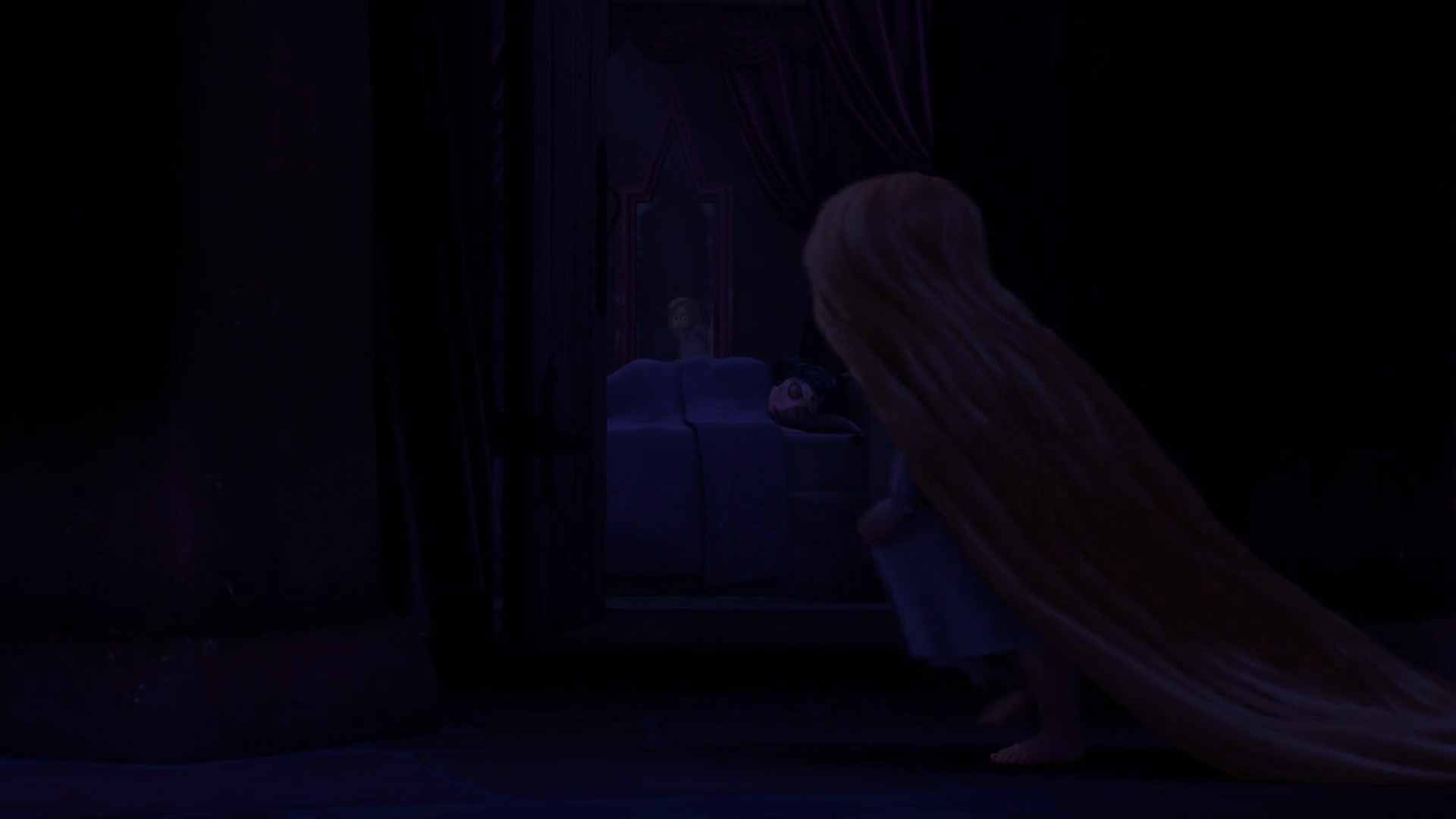
The mirror which we are going to focus on does not appear at first. In the beginning, when Rapunzel is a child sneaking out at night to see the flying lights she is reflected in a minor mirror in Gothel’s room. This is anecdotic, but it is our first clue that the witch is a vain person. Each time the mirrors reflect Rapunzel, it is a sign that she is in an atmosphere which is under the control of the stepmother.
The primary introduction of the mirror on screen is in the moment when it reflects Mother Gothel and Rapunzel, in a bad joke which the witch makes:
“Rapunzel, look in that mirror. You know what I see? I see a strong, confident, beautiful young lady. Oh, look, you’re here too!”

The mirror is directly related with the witch as a symbol of her ultimate goal to remain young forever. She stares at herself carefully, and every time she finds some sign of maturity or age, she asks Rapunzel to sing for her.
It reminds us of a mute faceless version of the mirror of the Evil Queen in Snow White. In the song Mother knows best, Gothel uses it to point out the idea than Rapunzel is not ready for abandon the tower. This act is almost cruel under a Lacanian point of view: Mother Gothel sets the mirror in front of Rapunzel, forcing her to scrutinize herself. The witch knows she won’t recognize the young woman reflected as the lost princess, but only as her naïve daughter.
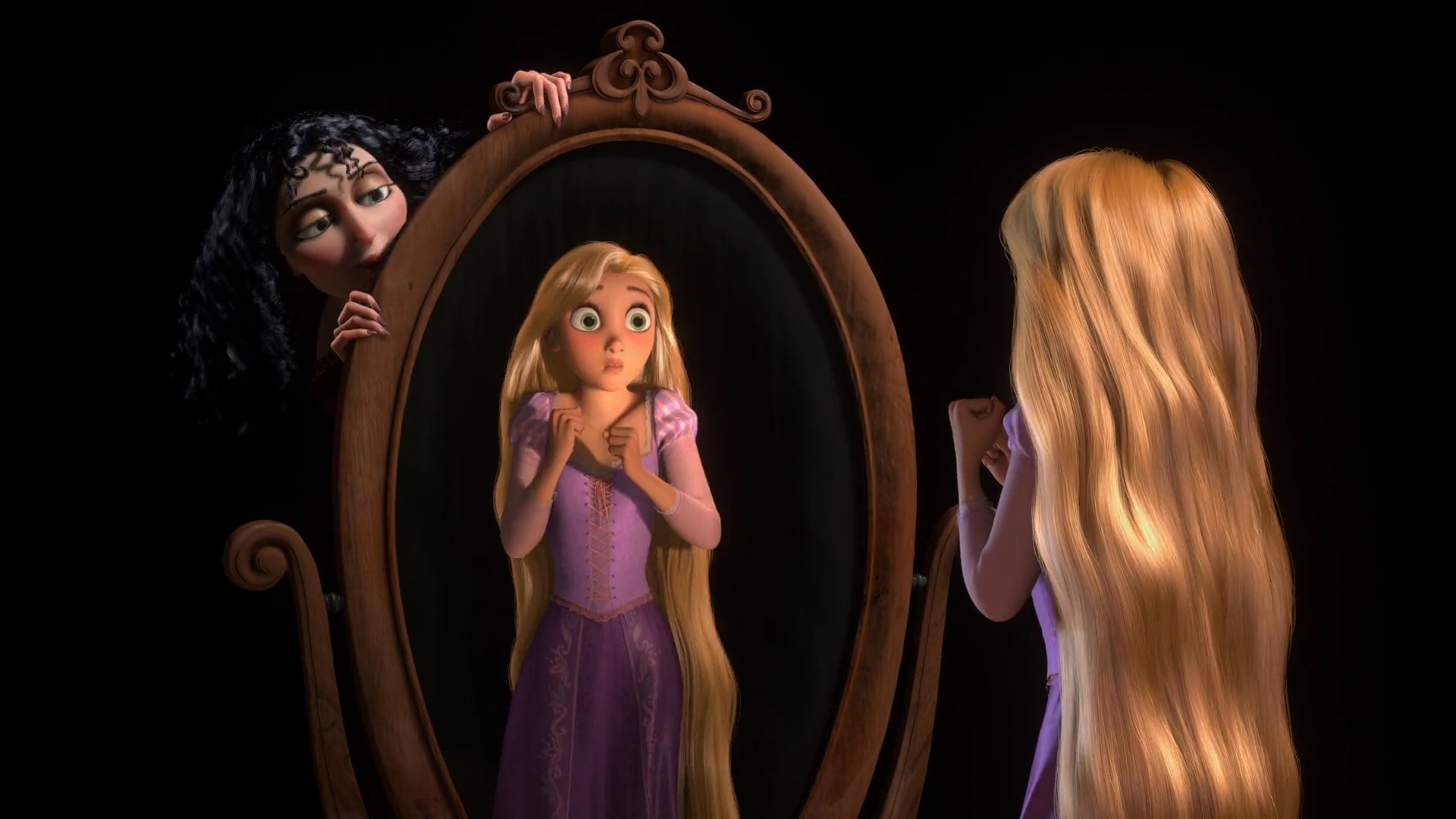
The play between the mirror, the witch and Rapunzel is a game of knowledge and truth. This is an example of the aspect of a mirror to distort or to reveal as I will later discuss. The idea of mirror as tool of truth (mirrors which reflect us as we are; mirrors used for spying far away; mirrors placed under the nose to see if a person is dead…) is beautiful and appealing and summarize the role of the object in this movie.
PART II: THE MIRROR AND US
Whilst Rapunzel hides Flynn in the closet, the mirror is facing away, instead of towards the action. However, once she is done, she hits it softly unintentionally and it starts reflecting her. Now we can see Rapunzel staring at it, this time gaining confidence and believing she is truly mature enough to be more independent from Mother Gothel. Besides, she finds the stolen crown Flynn had in his bag thanks to the reflection, and she tries it in her head. She does not recognize herself as a princess, but for a tiny moment the action stands quietly, creating a tension due to what the viewer knows and Rapunzel does not.
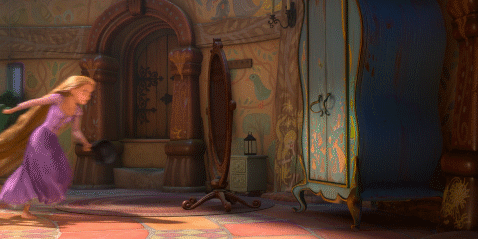
Camera planes with the mirror are very interesting. They make the audience stand in front of the frame, as if implying we are in the background just beyond the reflection. The mirror frame defines limits of the reality we must focus in. This frame could actually disappear, leaving the characters speaking directly with the viewer. Such a direct relation as this is very typical in those films which break the fourth wall. For example: in Funny Games, of Haneke, one of the boys looks to the camera and ask the viewer about the destiny of the kidnapped family. This has influence with Brecht’s theater guidelines. He claims that an actor must make the audience believe that fiction is reality. He named Rapoport, who claims that power of conviction comes with a mental exercise. Brecht says that relationship between the actor and the viewer must be as close as possible.
Coming back to our concern, the mirror is a voiceless witness. In Spain, we say walls have eyes; and in this case it is a piece of furniture, the mirror that is looking back at us. It takes part in the scene; he even composes in a discreet way what we see. And what we see is the same that he sees.
PART III: THE MIRROR AND THE SECRET
The mirror is a metaphor of the relationship between the witch-stepmother and Rapunzel. It is an indicator that shows us how the relation evolves throughout the film.
In the last scene described, as Rapunzel wears the crown, she is interrupted by the arrival of Gothel. When the girl hurries to hide the bag and the coronet she hits the mirror, which turns back to face the wall. This way, Rapunzel has a new goal in mind, a goal which doesn’t imply the compliance of her “mother”. The use of the mirror is also interrupted, and the secret is safe for the moment.

In the following scenes the mirror is left facing the wall. As I have said, it is an object linked with the witch. With the behavior we have witnessed so far, we can appreciate that this is a metaphor about what Mother Gothel knows and what she does not. It sets the limit of her control over what happens in the tower.
When she is with Rapunzel, and Flynn remains hidden in the closet, the mirror does not reflect the room. As if seeing the reflection could warn Mother Gothel about something out of order there.
Once the witch is gone, Rapunzel leaves the tower, with Flynn.
PART IV: MISSING MIRROR AND THE IMPORTANCE OF LIGHT

The mirror then disappears. Next time we see the inside of the tower, the witch is returning in anguish. She has the feeling that something may have happened with Rapunzel after seeking in every corner, she discovers that the princess is gone.

In the following seconds, a lot of things happen. Gothel still thinks she has influence over Rapunzel, so the mirror is shown in its place, next to the wardrobe (we can see it very quickly right before the witch opens the fake floor tile to enter). However, once she has finished inspecting the tower, it disappears.
Here we must introduce a new player: light. Light is something intrinsic to mirrors, and of course plays a role in this engine. As the mirror is the metaphor of the control and relationship between Gothel and Rapunzel, light is the metaphor of what Rapunzel is to Gothel. It is very obvious that the symbol of the kingdom is a sun, so relating it with Rapunzel is pretty coherent. Her powers come indirectly from the sun, which is light itself.
Knowing that, we can explain why the mirror is gone in the same instant Mother Gothel opens the curtains and light enters the dark room: Rapunzel is outside, the witch understands that now, and the bond between them is weaker than ever.
In the previous scene, as the witch is running towards the tower, we see how sun does not hit the building. Instead, it barely goes over the mountain and hits the opposite slope. Rapunzel, Gothel’s sun, is getting away from her.
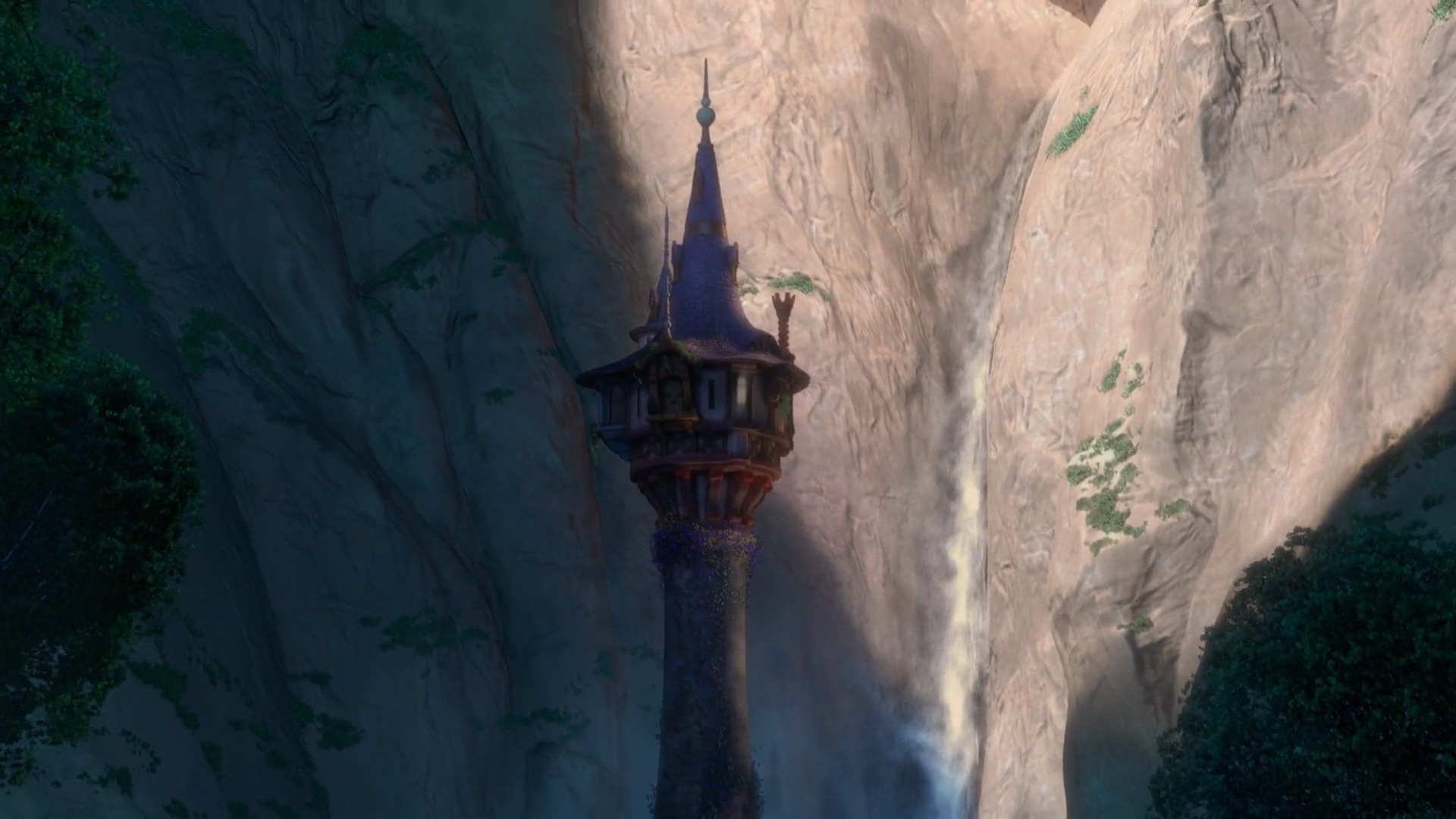
Last thing in the scene: the stepmother discovers the crown thanks to the reflection of the light which enters the window.
PART V: LIGHT, FOG AND OTHER REFLECTIONS
From this moment, the unit of Gothel-mirror-Rapunzel gets replaced by a the duality fog-light. Since Rapunzel is a light out of Gothel’s control, the witch needs to block that light in order to control it again. We could see it on a smaller scale in the song Mother knows best, when she closed the windows and extinguished the candles.

In the reprise of this song, when Gothel run into her in the forest, the fog comes and goes with her. This same fog appears in the lake, once Rapunzel has been attacked by the twins, making her impossible to distinguish Flynn tied up in the boat no what is really happening.
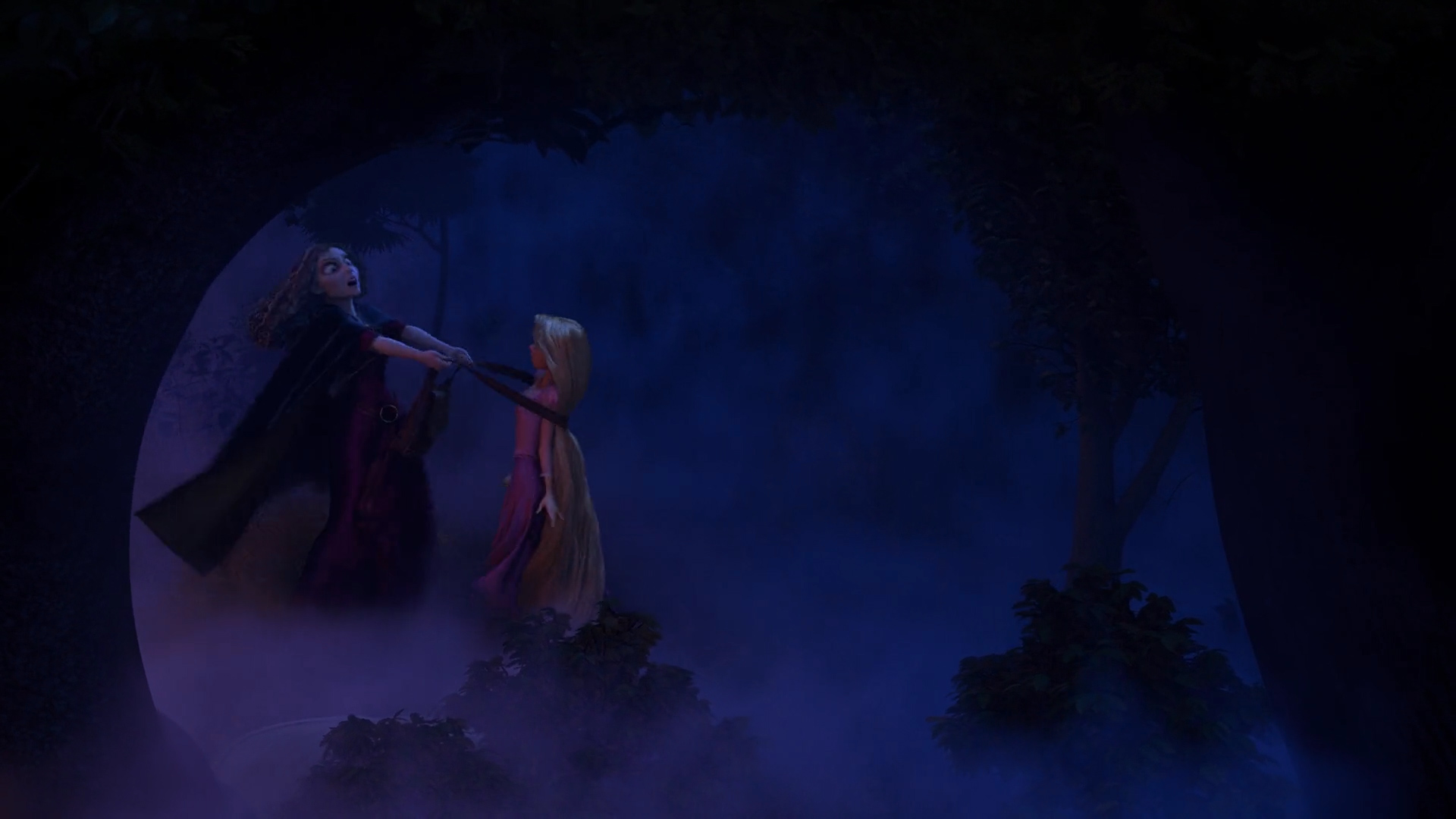
The presence of Gothel when the mirror is not in scene as a tool of control is transformed in a fog which seeks to confuse and get into the reason of the girl, so she comes back to the tower.
Ironically, the stepmother describes it very well to Rapunzel later:
I really did try, Rapunzel. I tried to warn you what was out there. The world is dark, and selfish, and cruel. If it finds even the slightest ray of sunshine… it destroys it.
In her mind of course, she is describing how the guards and the royalty of the kingdom destroyed her flower. But she also describes herself pretty well, and her actions along the film, blocking and lighting off every ray of shine from Rapunzel which she could not control.
We can point out two other reflections in the body of the film: the mosaic of tiles and the lake. The lake is transformed into a huge mirror, whilst the song I see the light (absolutely appropriate) is played. Water reflects the paper lanterns so perfectly that a point comes when we cannot distinguish the real ones than the reflected.
The other one takes place in the town square, and she is not able to recognize herself again in the royal family portrait. This is the second time she suffers this situation. Here we should name Lacan and his Mirror Stage. Rapunzel, as she knows herself and the lost princess are two alienated realities in her mind.
PART VI: BROKEN MIRROR
In the last part of the movie, the mirror has its last moments. When Rapunzel has her deja vù, we can see a moment when she looks herself in the mirror, and all the reality outside the frame is blur. That is very interesting, because for a moment the mirror seems to have a conscience and focus on the girl.

Once she realizes she is the lost princess, Mother Gothel starts going upstairs, and in the wall there is a painting of Rapunzel reading, illuminated by a square of light. Knowing what has just happened in the room gives us the clue to be able to connect it with the plot as a very discreet symbol.
Rapunzel fights the lies of Mother Gothel, and when she tries to touch her hair (something which she does constantly in the movie), they struggle and hit the mirror, making it fall and get broken in pieces. The rebellion of the girl makes the influence and control of Gothel stop. The relationship and control is broken. It’s interesting how in the moment of the fight the mirror was not facing the wall, but it appeared facing the scene, in its usual place next to the door.
 Flynn arrives and it is stabbed by the witch. This danger was not only obvious because of the plot, but also because of the atmosphere which surrounded the tower when he got there. Rapunzel was in, but there was no sun. The sky was overcast, telling us that Mother Gothel (the fog) is retaining Rapunzel (the sun) against her will.
Flynn arrives and it is stabbed by the witch. This danger was not only obvious because of the plot, but also because of the atmosphere which surrounded the tower when he got there. Rapunzel was in, but there was no sun. The sky was overcast, telling us that Mother Gothel (the fog) is retaining Rapunzel (the sun) against her will.
In the end, Flynn managed to use a piece of the broken mirror to cut Rapunzel’s hair, breaking all the magic and making the witch get older quickly. Horrified for her aspect and for her imminent death, Gothel tries to stare herself in the broken mirror, searching a last glimpse of her relationship with Rapunzel, a last desperate way to make her be back with her power, but there is no way to undo the events.
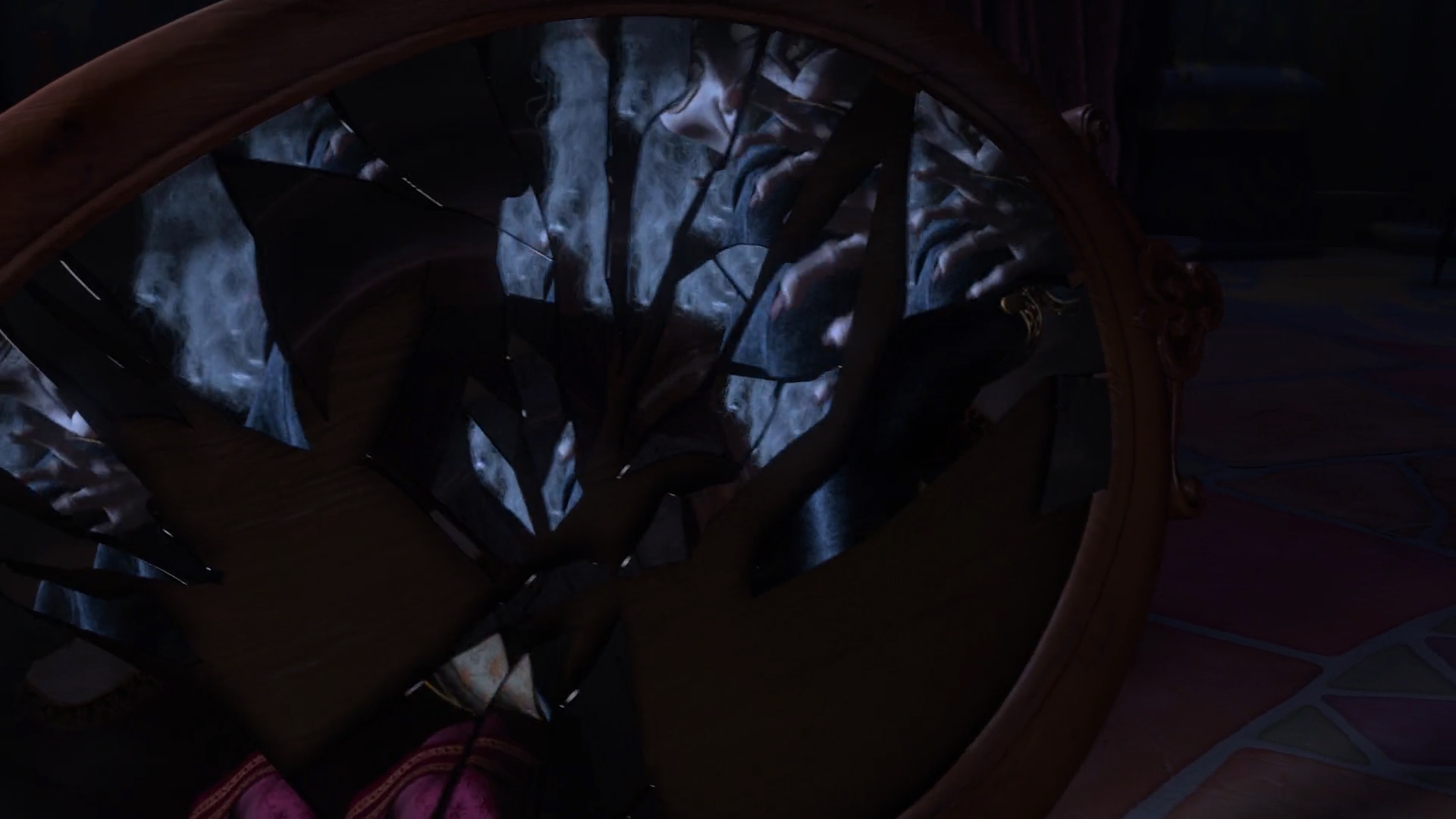 The act of contemplating oneself in a broken mirror is very used when a character is in disgrace, does not like himself o hesitates about the path to follow. For example, it can also be found in Beauty and the Beast.
The act of contemplating oneself in a broken mirror is very used when a character is in disgrace, does not like himself o hesitates about the path to follow. For example, it can also be found in Beauty and the Beast.
Mother Gothel falls from the top of the tower, whilst a ray of sun gets through the clouds and hit her, setting the triumph of Rapunzel and the end of the witch power. Like this, the plot starts and ends with a sunshine ray.
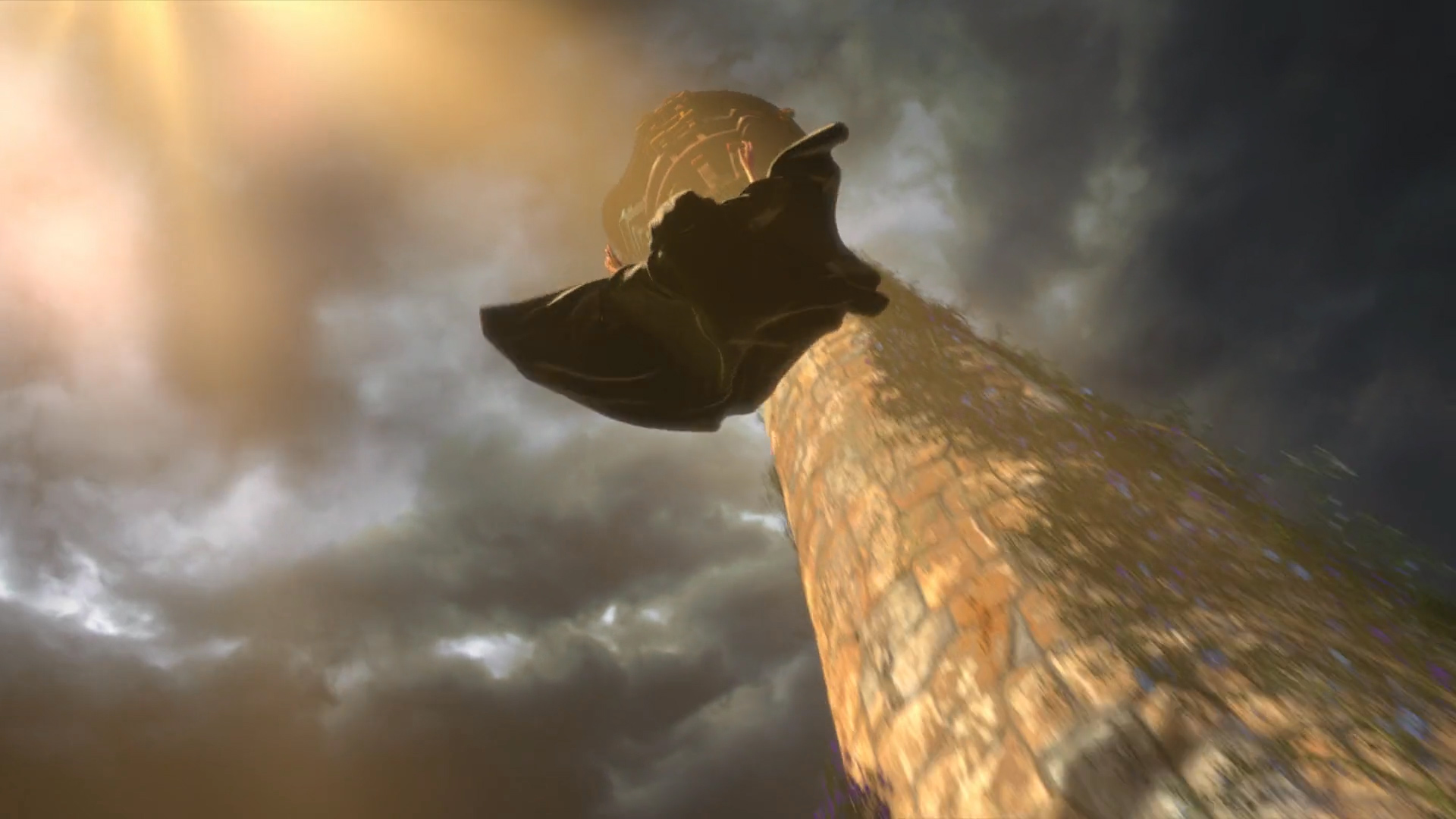 FINAL: LET’S CONCLUDE
FINAL: LET’S CONCLUDE
Of course the film brings many other topics to the table, all of them worth to be discussed. Rapunzel getting back her memory, since she is feeling something is missing; the maternal relationship, fake, but which struggles with true mother-daughter problems, like the wish of being free children have in juxtaposition with protecting parents; or the social aspect of the kingdom, a kingdom where dead penalty is legit, and there is an absurd devotion for the figure of monarchs.
And for sure there would be more examples of light and mirrors in the movie. The backlighting of the entrance of the tower, for example, which always shows situations where the witch is insecure, in danger or disadvantage.
However, this time we have focused in the mirror, for it was the interesting object of my Art Final Project (TFG in Spanish).
Would my considerations be regarded as true in Disney?
Sources:
- GRENO, N. (Director). (2010). Tangled [DVD].USA: The Walt Disney Company.
- CARRO FAUSTINO, Agustín. (2016). Black Mirror (Final Degree Tesis). Universidad Europea de Madrid (p. 41-44).
- BRECHT, B., & DIETERICH, G. (2004). Escritos sobre teatro. Barcelona: Alba Editorial. (p. 140-141).
- HANEKE, M. (Director). (1997). Funny games [Film]. Austria: Wega Film.




No Comments